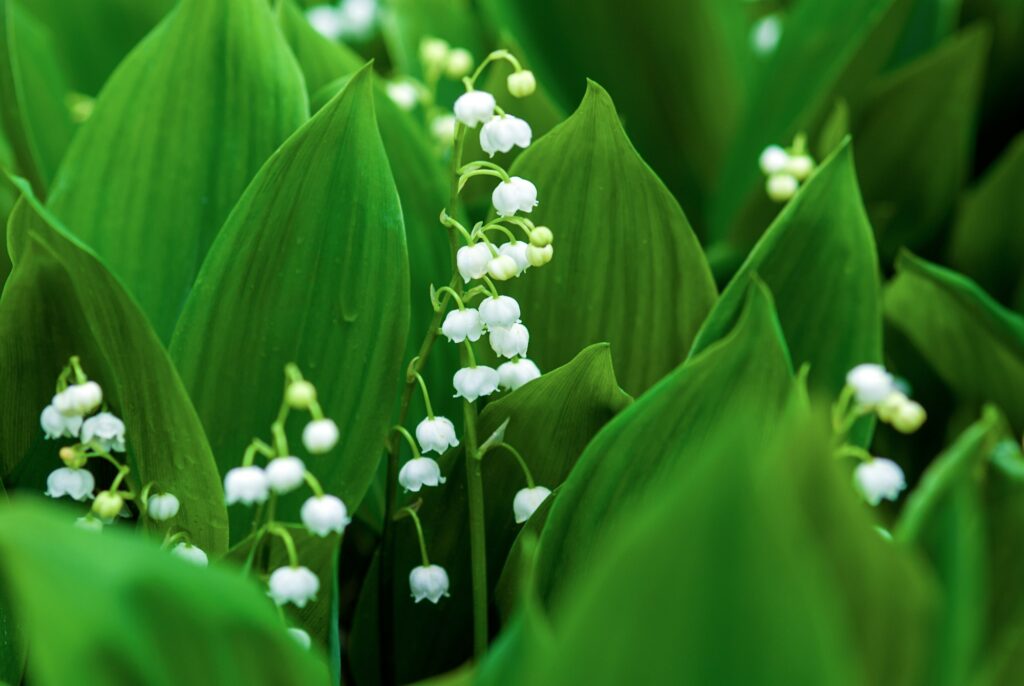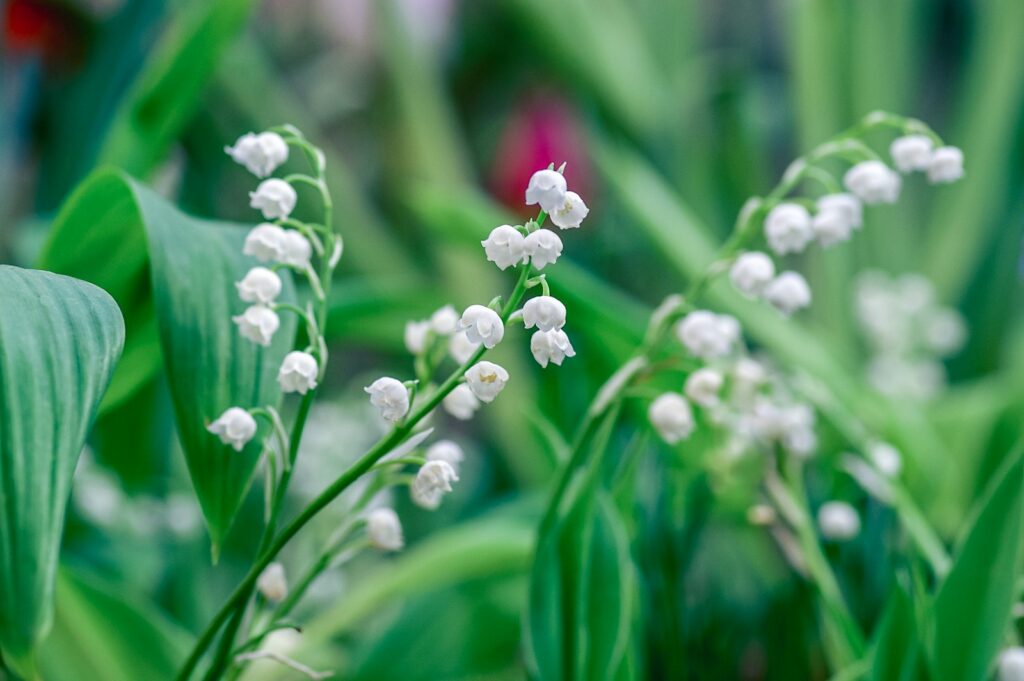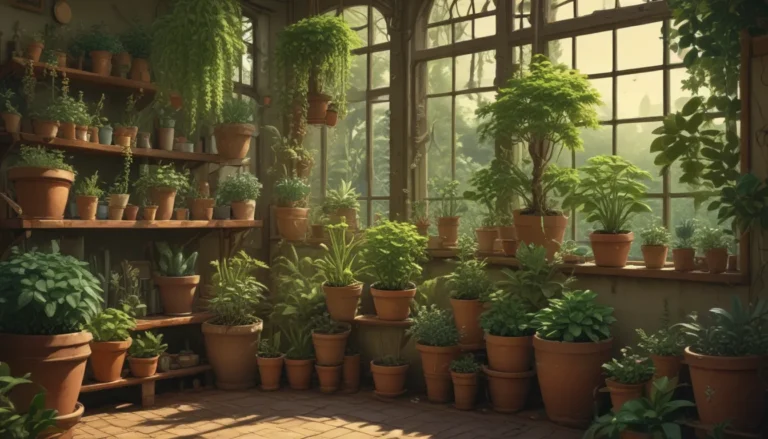Lily of the Valley: Invasive or Enchanting?

Lily of the valley (Convallaria majalis) is a beloved and fragrant flowering plant that has been cherished for centuries. Its delicate, bell-shaped white flowers and lush green foliage make it a popular choice for gardens, weddings, and even as a cut flower. However, despite its beauty and popularity, lily of the valley has a bit of a reputation as an invasive plant in some regions. In this comprehensive guide, we’ll explore the characteristics of lily of the valley, its potential invasiveness, and how to manage it in your garden.
Characteristics of Lily of the Valley

Before we dive into the question of invasiveness, let’s take a closer look at the characteristics of this charming plant:
- Appearance: Lily of the valley features dainty, white, bell-shaped flowers that hang gracefully from a slender stalk. The flowers are typically 5-10 mm long and have a sweet, distinctive fragrance. The plant’s leaves are long, oval-shaped, and a lush green color.
- Growth Habit: This perennial plant grows from rhizomes, which are underground stems that spread horizontally. Lily of the valley typically reaches a height of 6-12 inches (15-30 cm) and forms dense, spreading colonies over time.
- Blooming Season: The flowers usually appear in mid to late spring, depending on the climate. In some regions, they may bloom as early as April or as late as June.
- Native Range: Lily of the valley is native to Europe, Asia, and parts of North America. It is widely naturalized in other temperate regions around the world.
Is Lily of the Valley Invasive?
Now, let’s address the main question: is lily of the valley invasive? The answer is not a simple yes or no, as it depends on various factors and the specific location. Here’s what you need to know:
- Invasive Potential: Lily of the valley has the potential to be invasive in certain conditions. Its ability to spread rapidly through underground rhizomes allows it to form dense colonies that can outcompete other plants. This can be particularly problematic in natural areas where it may disrupt native ecosystems.
- Regional Differences: The invasiveness of lily of the valley varies by region. In some areas, it is considered a highly invasive species, while in others, it may be less aggressive. Factors such as climate, soil type, and the presence of natural predators or competitors can influence its invasive potential.
- Garden Settings: In garden settings, lily of the valley can be more manageable than in natural areas. However, it can still spread quickly and may require some control measures to keep it within bounds.
- Legal Status: In some regions, lily of the valley is listed as an invasive or noxious weed, which means it may be regulated or prohibited. It’s important to check local regulations before planting or allowing it to spread in your garden.
Managing Lily of the Valley in Your Garden

If you love the beauty and fragrance of lily of the valley but want to minimize its invasive potential, here are some tips for managing it in your garden:
- Containment: Consider planting lily of the valley in containers or raised beds to limit its spread. You can also use physical barriers such as edging or buried barriers to prevent the rhizomes from spreading beyond the desired area.
- Regular Maintenance: Keep an eye on your lily of the valley patch and remove any new shoots that appear outside the designated area. Regularly dividing and thinning the clumps can help control its spread.
- Proper Disposal: If you need to remove lily of the valley from your garden, be sure to dispose of the rhizomes and any plant material properly. Do not compost them, as this can facilitate further spread. Instead, bag them and dispose of them in the trash.
- Alternative Options: If you’re concerned about the invasive potential of lily of the valley, consider planting native or non-invasive alternatives that offer similar aesthetic qualities. Some options include Solomon’s seal (Polygonatum), false Solomon’s seal (Maianthemum), or sweet woodruff (Galium odoratum).
Frequently Asked Questions
Is lily of the valley poisonous?
Yes, lily of the valley contains cardiac glycosides, which can be toxic if ingested. All parts of the plant, including the leaves, flowers, and berries, are poisonous. Keep this in mind if you have children or pets that may be tempted to eat the plant.
Can I grow lily of the valley indoors?
While lily of the valley is primarily grown outdoors, it is possible to grow it indoors under the right conditions. It requires a period of cold dormancy, so you’ll need to simulate winter conditions by keeping the potted plant in a cool, dark place for several weeks before bringing it indoors to bloom.
How do I propagate lily of the valley?
Lily of the valley can be propagated by dividing the rhizomes. The best time to do this is in the fall or early spring when the plant is dormant. Carefully dig up a clump, separate the rhizomes, and replant them in a new location.
What are the ideal growing conditions for lily of the valley?
Lily of the valley prefers partial to full shade and well-drained, humus-rich soil. It can tolerate a range of soil types but grows best in moist, slightly acidic conditions. The plant is hardy in USDA zones 3-8.
How long does lily of the valley bloom?
The blooming period for lily of the valley is relatively short, typically lasting 2-3 weeks in the spring. However, the plant’s lush green foliage remains attractive throughout the growing season.
Conclusion
Lily of the valley is a charming and fragrant plant that has captured the hearts of gardeners and flower enthusiasts for generations. While it has the potential to be invasive in certain conditions, with proper management and careful consideration, it can still be enjoyed in the garden. By understanding its characteristics, invasive potential, and how to control its spread, you can make informed decisions about incorporating lily of the valley into your landscape. Remember to check local regulations, consider alternative options, and always prioritize the health of native ecosystems when making plant choices.
Whether you choose to embrace the beauty of lily of the valley or opt for non-invasive alternatives, there are plenty of ways to create a stunning and fragrant garden that brings you joy and tranquility. Happy gardening!





